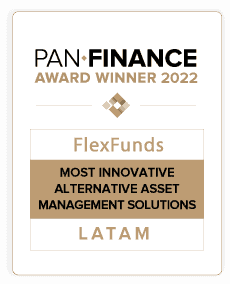Within the many options in the financial market to leverage projects, special purpose vehicles (SPVs) are among companies’ most recognized and used alternatives. But why do companies open SPV funds, and how are these vehicles structured?
SPVs are structured as independent entities by companies of all sizes, including those backed by venture capital, to carry out specific financing projects and facilitate their respective administration.
Thanks to SPVs, companies can raise capital through a legal entity independent of the parties. They thus can protect the parent organization from the risks associated with operations carried out through this instrument.
These vehicles are put into operation to execute securitization strategies, making it possible to convert a basket of illiquid assets into listed securities through the constitution of an autonomous patrimony.
They also facilitate the transfer of assets in joint operations in the corporate world, such as mergers and acquisitions or property sales, generating possible tax efficiencies.
In the case of startups, special-purpose vehicles are used by investors as an instrument to inject said capitalization or even launch a new business. These companies are popular because they allow you to isolate the financial risk and even share it with other investors through a single instrument that remains independent.
Why do companies open SPV funds, and how are these vehicles structured?
Special purpose vehicles are structured as a subsidiary of the sponsoring firm, a figure with which the company that creates this instrument is called, FlexFunds explains. Given this characteristic, these companies can even be established in other geographies; however, there are various aspects to consider when making this decision, and one of the most important is tax related.
Thanks to this independence, the SPVs have autonomy from the legal perspective and the patrimonial point of view. Since this autonomous patrimony is created with the launch of an SPV, the balances of this instrument remain separate from those of the sponsoring company so that the performance of one or the other does not affect any of the parties.
Its relationship with the sponsoring company and the degree of control it assumes are aspects that must be defined in the statutes of the SPV. The sponsoring company, in turn, assumes responsibility since it must provide the resources, knowledge, and adequate management tools for the proper operation of this vehicle.
The life cycle of SPVs is variable since it usually lasts until the permanence of the assets, or in other words, the fulfillment of a specific purpose.
What aspects must be considered?
The most outstanding quality of SPVs is that they are relatively easy to create; they isolate the risk of companies, limit the exposure to bankruptcy and insolvency, and at the same time generate significant tax benefits depending on the jurisdiction where they are located. They also become a channel that facilitates the transfer of assets and the execution of specific projects, sharing the risk with interested third parties. In turn, they simplify the finances of the organizations that execute them and offer operational freedom to the parent company to execute its different strategies.
On the flip side, despite decades of learning and tighter regulatory scrutiny, SPVs still carry a significant stigma following the case of US energy company Enron Corporation, which filed for bankruptcy in 2001 after serious accounting errors and pressures on the auditing firm Arthur Andersen were revealed.
This case, considered one of the biggest financial scandals in history before the subprime mortgage crisis that took Lehman Brothers away, motivated greater control by the financial authorities and, with it, the emergence of the Reform Law Public Accounting for Companies and Investor Protection (Sarbanes-Oxley Act). Other aspects to consider about this type of company include limitations on access to credit and regulatory changes that could change the game’s rules for parent companies.
With this panorama, special-purpose vehicles are an exciting alternative to developing a specific project, whether it is the securitization of assets, investing in a startup, or providing a specific service. As with any financial instrument, it is essential to get proper advice, to know in depth the regulatory aspects, and, above all, to be aware of the experience that the past has left us so that the shocks caused by its misuse to exploit accounting gaps do not happen again.







